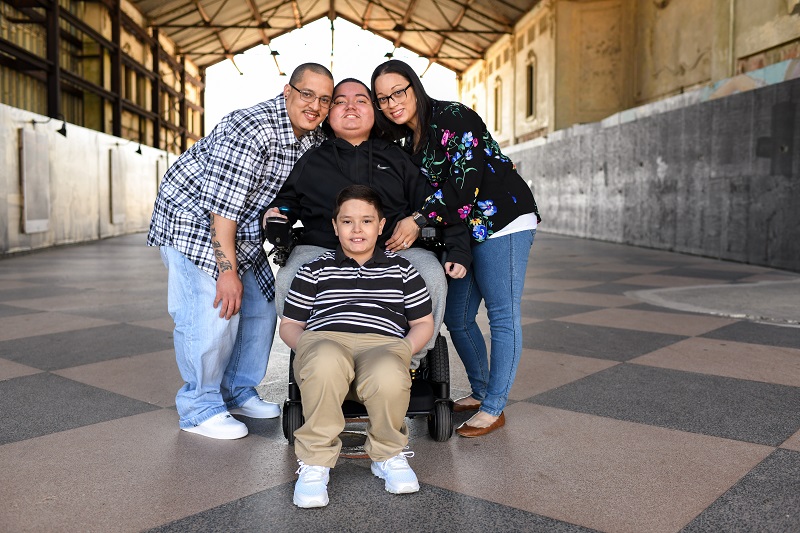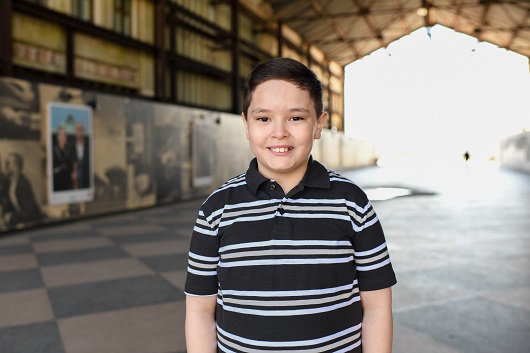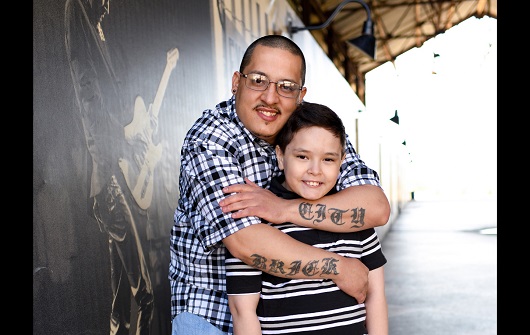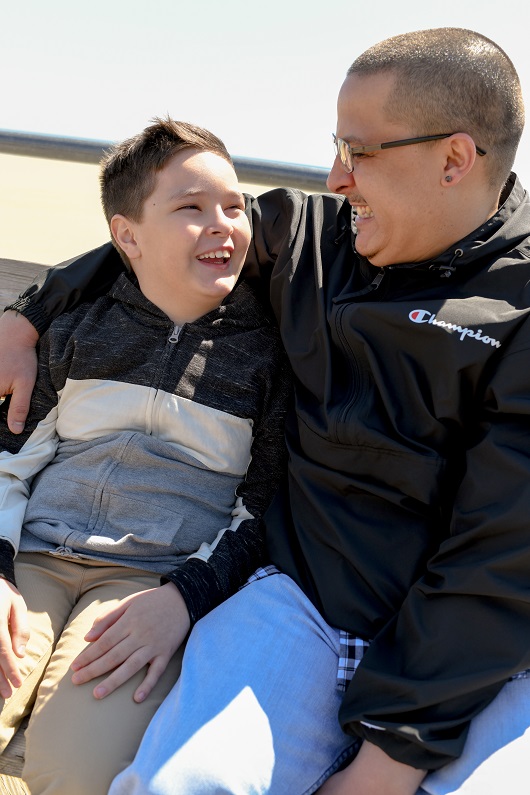Oakhurst Father and Son Overcome Chiari Malformation

June 07, 2021
As a frequent allergy sufferer, Michael Roman wasn’t too concerned in 2017 when he started experiencing symptoms that included a headache, cough and sneezing. But he knew it was time to see a doctor when the number and intensity of his symptoms gradually increased over the next year—he became dizzy, had chest and neck pain, and lost his taste, smell and some of his hearing.
Michael and his wife, Marilyn, contacted a neurologist outside of Hackensack Meridian Health in search of answers. But what they got, instead, was dismissal. “He told me the cause of all my symptoms was most likely anxiety,” Michael, 36, remembers. “He said the best thing for me was to see a therapist.”
Michael and Marilyn were discouraged. While anxiety was certainly a part of Michael’s daily life—he and Marilyn are the parents of three children, one of whom has a chronic health condition —the couple did not believe it was the whole story.
Michael later sought a second opinion and saw Kenneth Newkirk, M.D., who specializes in head and neck surgical oncology at Jersey Shore University Medical Center. Dr. Newkirk diagnosed Michael with Chiari malformation, a condition in which brain tissue extends into the spinal canal. It occurs when part of the skull is abnormally small or misshapen, so that it presses on the brain and forces it downward. The condition develops as the skull and brain grows.
As a result, symptoms may not occur until late childhood or adulthood. Regular monitoring, medications and surgery are treatment options that may be recommended based on the severity of the symptoms. At this stage in his condition, Dr. Newkirk felt Michael’s symptoms were not severe enough to perform surgery yet.
Around this time, the Romans’ 8-year-old son, Dominick, began experiencing headaches and difficulty walking. “I kind of disregarded it at first, thinking he was just mimicking his dad,” Marilyn says.
Similar Symptoms, Same Diagnosis
One day, as the two watched television together at their home in Oakhurst, New Jersey, Dominick told his mother that his face and arm were numb. She immediately called the family’s pedestrian, Amy Peardon, D.O.
She recommended he see Janti Chaaban, M.D., pediatric neurologist at K. Hovnanian Children’s Hospital at Jersey Shore.
The family was initially concerned that it might be Duchenne muscular dystrophy—a severe type of muscular dystrophy that primarily affects boys—like Dominick’s older brother, Damarius. On March 12, 2020, Dominick met with Dr. Chaaban, who confirmed that Duchenne was not the source of the symptoms. “We were able to rule that out quickly,” he says.
Tests revealed Dominick’s diagnosis: Chiari malformation type I.
Dr. Chaaban referred the Romans to Lawrence Daniels, M.D., a pediatric and adult neurosurgeon. Both Dominick and his father continued to experience worsening symptoms, so Dr. Daniels suggested surgery—not just for Dominick, but also for Michael.
“Michael’s symptoms were disrupting his quality of life, and after taking a closer look at the limited blood flow in the back of the brain and discussing his case with Dr. Newkirk, we believed surgery was his best option now, too,” Dr. Daniels says.
Successful Surgery for Two
Because Dominick’s symptoms were worsening and Michael’s were more consistent, Dr. Daniels scheduled Dominick’s surgery first. In October 2020, Dr. Daniels and his team performed a three-hour surgery on Dominick to create space at the base of his brain and ease his symptoms.
When he woke up from surgery, Dominick’s first words were: “The pressure is gone!”
In January 2021, Dr. Daniels performed the same surgery on Michael, who immediately felt as relieved as his son. “I’m still recovering and going through rehab, but I’m ready to play sports and go back to work,” Michael says. “I feel wonderful.”
Chiari malformation is a mechanical issue that can be fixed by surgery in most cases, Dr. Peardon. “It was a mechanical issue that we fixed,” she says. “Most kids go on to live perfectly normal lives.”
For Dominick, the only remaining sign of any health issues is the tiny scar on the back of his head, Marilyn says. “He’s running around now, throwing the basketball all over,” she says. “He’s just a ball of energy.”
The Romans credit their care team for giving them their lives back. Without them, Marilyn says, she’s not sure where her family would be today. “Because of them, I got my husband back, and he and my son are happy and healthy,” she says.
Next Steps & Resources:
- Learn more about pediatric neurosurgery at Hackensack Meridian Children’s Health
- Meet our sources: Amy Peardon, D.O., Lawrence Daniels, M.D. and Janti Chaaban, M.D.
- To make an appointment with one of these doctors, or another near you, call 800-822-8905.
The material provided through HealthU is intended to be used as general information only and should not replace the advice of your physician. Always consult your physician for individual care.









